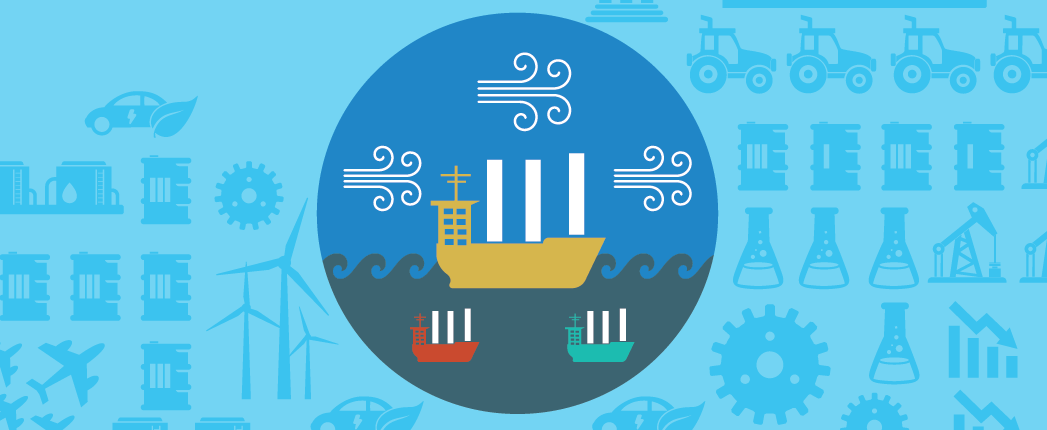
Wind assistance is one of the ways by which the commercial maritime industry will reduce its greenhouse gas and pollutant emissions in the next decade. What might this development mean for lubricants? Trevor Gauntlett investigates.
According to the United Nations Conference on Trade and Development, approximately 80% by volume of world trade travels by sea. Shipping is by far the most efficient mode of freight transport by emissions per ton kilometer. However, as the global economy has grown, carbon emissions from shipping have increased consistently and were estimated by the International Maritime Organization to account for 2.89% of all anthropogenic greenhouse gas emissions in 2018.
The IMO has set an ambition to reduce the carbon intensity of emissions from shipping by at least 40% by 2030, and 70% by 2050, compared with 2008 levels. To achieve this, multiple solutions must be deployed, including “drop-in” (near) zero-carbon fuels such as bio-liquefied natural gas, bioethanol or hydrocarbon E-fuels, for which the lubrication requirements are mostly known, and those such as ammonia and hydrogen in combustion engines that would place radically different demands on marine crankcase lubricants.
Return to Sail?
Avoiding fuel use through wind assistance is also part of the route to lower emissions. However, this is not a romantic return to the schooners and barques of the 18th or 19th centuries. The sails of tomorrow will likely be marine-grade materials built for robustness and longevity, rather than canvas. And they are only part of the wind-assisted solution. Some 21st century devices also rotate to generate propulsion, rather than being relatively passive captors of the wind.
In the past few years, many systems have been tested for their ability to reduce energy consumption. Now, with the next phase of the IMO’s decarbonization journey underway, commercial installations are beginning and computer-generated images can be replaced with photographs of real systems on the water.
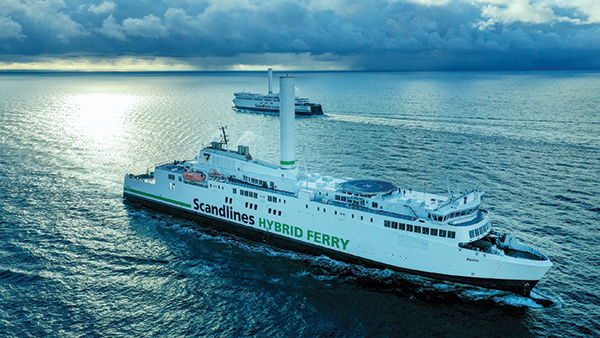
Wind assistance is fuel-agnostic, so it can further reduce energy consumption and emissions with any alternative propulsion strategy. Most wind-assist systems can be retrofitted to existing vessels, and—as they are essentially on-deck installations—require no or very little time in dry dock. In a press release ahead of its biannual conference in February, the International Windship Association estimated that by the end of 2023 up to 50 large ships will be making use of wind as a renewable energy source with a combined tonnage of over three million deadweight tons.
According to Aleksander Askeland, chief sales officer at green maritime technology provider Yara Marine Technologies, based in Oslo, Norway: “The last years have seen a significant acceleration of wind-assisted propulsion solutions. This is the result of increased interest from the maritime industry and an understanding that these developments offer immediate returns in the form of decreased emissions, lower costs on fuel and advances in ESG (environmental, social, and corporate governance) goals.”
But what does this mean for lubricants?
The bearings supporting the wind-assist devices could face significant stresses from both the design of the sails and the hostile on-deck environment. Also, with less demand on engines, are we about to face “slow steaming 2.0,” where new issues arise in the crankcase due to engines being idled or running on low power when the wind is favorable?
Lifting Forward
While most people think of a sail as a piece of canvas that captures some forward element of the wind, the modern wing sails all use a similar principle to airplane wings to generate lift in a direction perpendicular to the apparent wind (the wind experienced on the deck of the vessel due to both the actual wind and the vessel’s movement). So, with a vertical wing, lift is forward movement, not upwards. There is also drag, in the same direction as the apparent wind. Optimizing the lift-to-drag ratio is a key element of the design of any airfoil.
The market is now occupied by several designs that seek to maximize the lift effect by guiding the wind around the wing such that there is faster moving air—and therefore lower pressure—on the fore side of the wing (in the direction of travel) and slower moving air at high pressure on the opposite side. This can be achieved by adjusting the angle of a symmetrical wing and enhanced by a single asymmetric wing, like an aircraft wing, or by the use of multi-element wings (like the wing and flap on an aircraft) to create a camber.
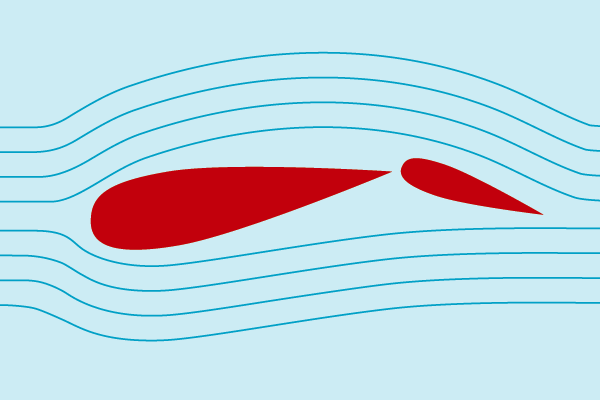
Portsmouth, United Kingdom-based BAR Technologies’ WindWings are in this category; the publicity images may look like a large square-rigged sailing ship catching wind from the rear, but the three-part structure is designed to present its horizontal axis to the wind.
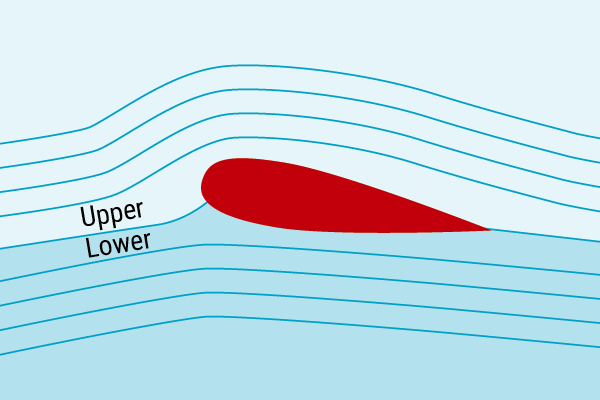
A WindWing is a three-element design consisting of a trailing element, a main element with structural spar and a leading element. “These leading and trailing elements can be rotated independently, which allows for a greater range of tuning, thus catering to more wind directions and conditions,” Hugo Knight of BAR Technologies explained to Lubes’n’Greases. “The rotation of these elements also allows the wing to be folded when stowed, thus reducing its deck footprint.” This latter function is critical to the core operation of the vessels, allowing and not impeding loading and unloading.
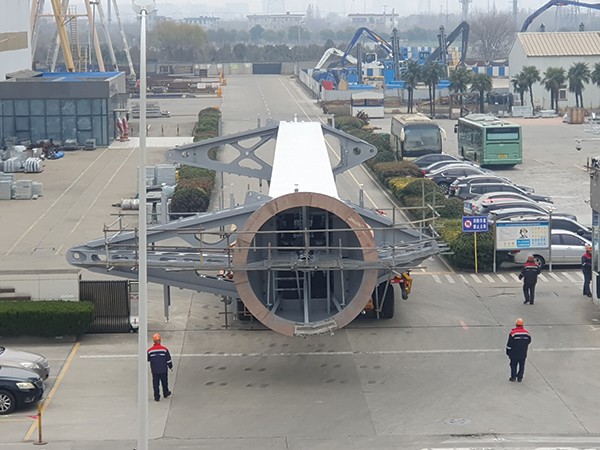
BAR Technologies is partnered with Yara Marine Technologies to market the WindWings. “We are proud of our partnership with BAR Technologies to scale up global offerings of WindWings,” Askeland said. “With the first set of wings completing assembly, we eagerly anticipate the installation process for WindWings and their upcoming first voyages.” The first installation of BAR Tech WindWings by Yara Marine Technologies began with the cutting of the steel for the first main spar in November 2022. Two WindWings will be installed on the Pyxis Ocean, owned by Mitsubishi Corporation Shipping, and chartered by Cargill.
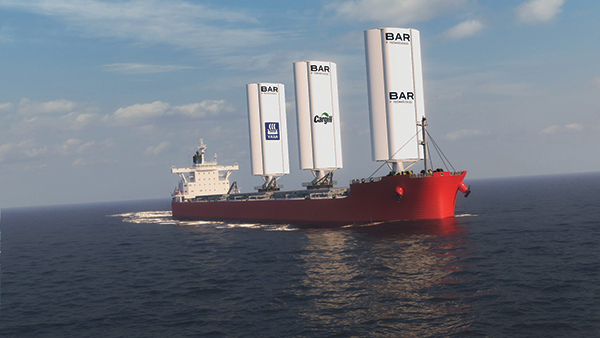
Meanwhile, four two-part wings from French company Ayro will be installed on the first modern sail-powered new-build cargo vessel. Launched in early 2023 in Poland, the Canopée was then towed to the Netherlands for fitting out, including its fabric wing sails. The ship was developed to transport the Ariane 6 space launcher from continental Europe to the launch center in French Guiana. French maritime decarbonization business Zéphyr & Borée is behind several wind-assist designs, including the Canopée.
Kites
Among those promoting kites as viable sources of energy is the French company Beyond the Sea, which was expected to begin testing in late February on a catamaran crewed by the company’s founder and former ocean racer, Yves Parlier. For large, commercial ocean-going vessels, Beyond the Sea plans to commercialize a 100-square meter sail in 2023 and a 200-square meter sail in 2025.
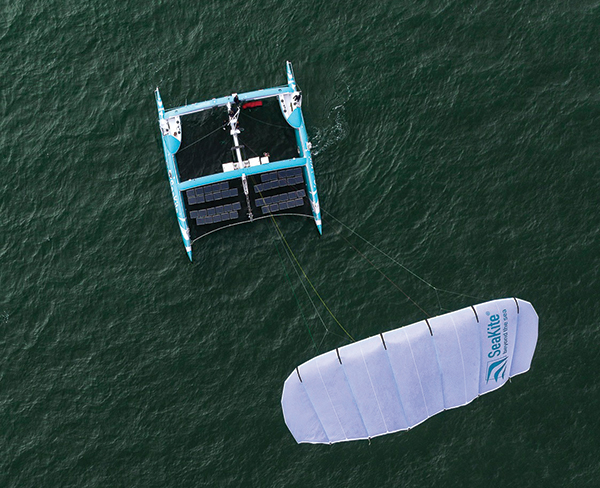
Rotating Devices
Rotating devices utilize the Magnus effect, where the force from an airstream on a spinning body induces a force perpendicular to both the direction of the airstream and the axis of the rotor. The effect has similarities with the effect of an airfoil, in that lift occurs due to higher speed, low pressure air on the “forward” side of the cylinder, and lower speed and high pressure “behind.” These devices are often called Flettner Rotors, as the effect was first exploited by the German engineer Anton Flettner in the 1920s.
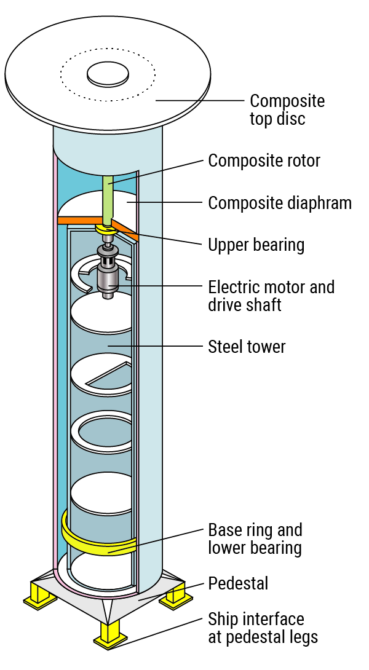
Like wing sails and kites, the main players are in Europe, with a few in Asia, Australasia and North America. Anemoi Marine Technologies (AMT) and Norsepower, respectively based in London, U.K. and Helsinki, Finland, both have vessels on the ocean and orders for more. Norsepower reported energy savings of over 8% in a 16-month ship trial with the Maersk Pelican (now the Epanastasea), a 110,000 deadweight tons oil and products tanker. Meanwhile, the M/V Copenhagen (pictured with its sister ship the M/V Berlin) achieved around 4% energy savings with a single rotor sail.
But at what cost? According to Anemoi’s website, “in favorable wind conditions, the propulsion power provided by a Rotor Sail can be over 10 times the input power.” So provided the ship’s auxiliary power systems can drive the rotors, the gains are significant.
Lubrication Challenges
Vibrations of many frequencies are a regular feature on any sea-going vessel. Waves and swell have their own frequencies, which vary with sea conditions. In wind-assist mode, there is also vibration from the engine. Nearby auxiliary equipment, such as refrigeration equipment, will have a characteristic frequency. All can set up harmonics in the superstructure. The environment is chemically aggressive, with salt water, high humidity and significant temperature variations.
Some of the wing sail systems are deck-mounted with a slew bearing at the base. They will have to cope with the strong tilting movements that result from the wind impacting the spar perpendicular to the axis of rotation. While this varies with the motion of the ship, there will also be shock impacts in rough weather. As slew bearings don’t rotate consistently, it is common to ensure that grease is distributed throughout the bearing.
Several kite designs are shown with the kites connected to the vessel by a windlass. So only the duration of the force applied is different from regular use of such equipment in the absence of a kite.
Rotor sails also have a main bearing at the base, but they rotate around an internal tower, which is fixed to the vessel superstructure. In a white paper presented to the Royal Institute of Naval Architects in February, AMT described their rotor sail structure. Both bearings (between the motor and the rotor and between the internal tower and the rotor at the base) are roller bearings, with the upper bearing described as a “standard roller bearing.”
In the first two years at sea, the four Anemoi rotors aboard the 64,000-deadweight ton M/V Afros required only minor maintenance, including relubrication of the upper bearing between the electric motor and the rotor.
This hints that the requirements of any lubricants and greases are nothing new. The demands placed on the lubricant are similar to those on the deck cranes. Where they differ, they are still not as severe as those on the bearings of an offshore wind turbine. It is perhaps disappointing for those in lubricant or grease R&D, but possibly good news for those in sales or supply chain, if a product is already in the portfolio. According to one industry insider, “any type of wind energy extraction using sails is probably going to be less severe than a wind turbine application.”
Slow Steaming 2.0?
With little in the environment that is potentially new for greases or other on-deck lubricants, could the true impact of wind-assist be indirect and in the engine room? Any wind-assist will result in less energy output from the engine. That will probably be through a combination of normal power for less time and lower power. Could the impact on the crankcase be equivalent to slow steaming?
Perhaps not, according to Professor Ian Taylor of the University of Central Lancashire in the U.K. “One contributor to the corrosion issues seen about 15 years ago was the fuel, which for many users has been cleaned up with the IMO 2020 regulations on sulfur emissions.” There are currently vessels burning heavy fuel oil with scrubbers to remove the sulfur-containing emissions, but the market will trend toward low-sulfur fuels as more new-build vessels are launched.
Askeland is very upbeat. He believes customers will reap long-term benefits from wind-assisted propulsion, as it is unlikely to be impacted significantly by incoming environmental regulations or the race for future fuels.
“It is flexible, adaptable and emission-free—and it is encouraging to see the industry acknowledge the value of these advances for shipping’s future,” he said.
Trevor Gauntlett has more than 25 years’ experience in blue chip chemicals and oil companies, including 18 years as the technical expert on Shell’s Lubricants Additives procurement team. He can be contacted at trevor@gauntlettconsulting.co.uk